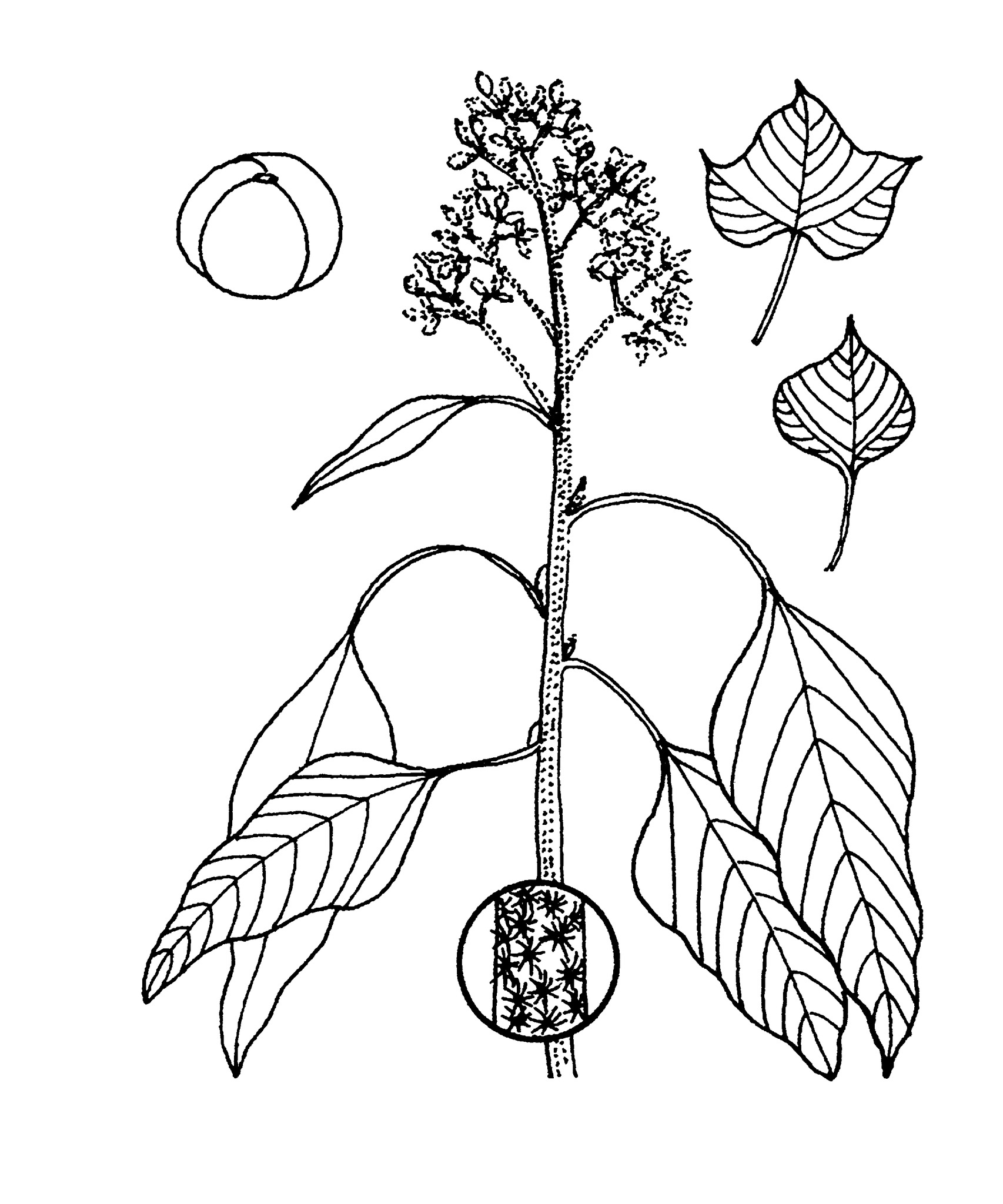
From the Greek for ‘wheaten flour’, alluding to the mealy appearance of the lower leaf surface.
Trees with male and female flowers on the same plant, evergreen; stems and foliage without latex. Indumentum of simple and star-shaped, multicellular hairs. Stipules entire, inconspicuous, soon shed. Leaves alternate, stalked, palminerved, lobed, with 2 glands at base of blade; margins entire. Inflorescences terminal, paniculate, solitary, uni- or bisexual with the flowers in bracted clusters. Male flowers stalked; calyx lobes overlapping, 2-3, partially fused and unequal; petals overlapping, 5(6), free; disk 5-lobed; stamens numerous, filaments with the outer ones free and the inner ones more or less united and borne on a conical receptacle. Female flowers stalked; calyx lobes overlapping, 2-3, partially fused and unequal; petals overlapping, 5(6), free; disk 5-lobed; ovary 2-4-chambered, ovules 1 per chamber; styles 2 or 3, fused at base, divided into 2. Fruits drupaceous, indehiscent, 1-4-lobed, surface smooth. Seeds ovoid to roundish; ecarunculate.
2 species in tropical Asia, Malesia, Melanesia and Australia. Both species are commonly cultivated.
Seeds.
Large trees, fruits drupaceous with 1-4 seeds. Some species of Vernicia have sometimes been included in Aleurites.
Forster (1996b), Stuppy et al. (1999).
Source: (2002). Euphorbiaceae. In: . Horticultural Flora of South-eastern Australia. Volume 3. Flowering plants. Dicotyledons. Part 2. The identification of garden and cultivated plants. University of New South Wales Press.
